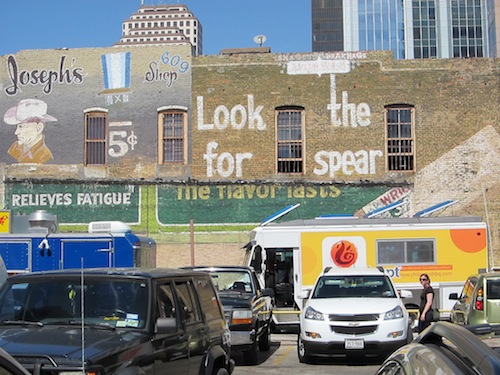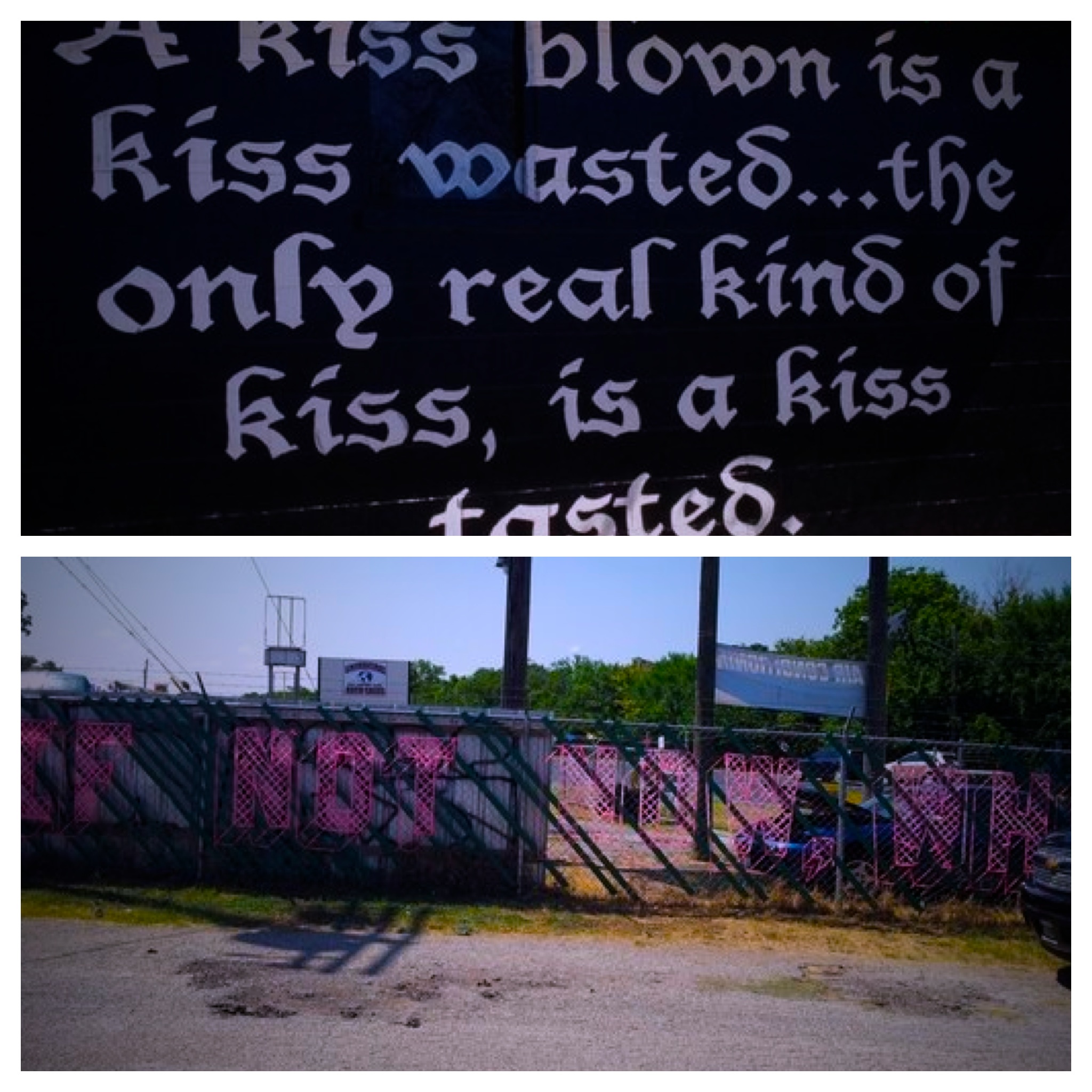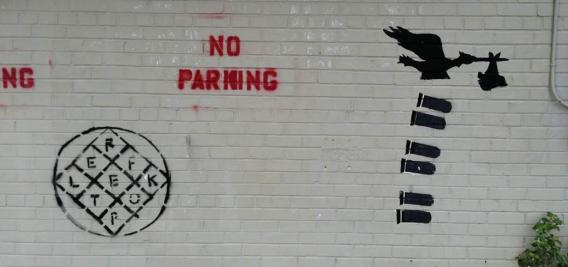
Photo credit: Flickr user elizaO
It’s nice to think about graffiti as a free, democratic art form. Anyone can participate—all you risk is a fine or possibly jail time! But in Austin, lately, graffiti has been taken over by the big green capitalist monster (a monster, some might say, who’s slowly but surely encroaching on the town with heinous condos and hip, remodeled convenience stores that stock only local beer and kombucha).
A lot of Austin graffiti and mural painting has an explicitly commercial focus. Take, for example, the newest addition to my visual neighborhood at Tyson’s Tacos on Airport. On one side of the building’s facade you find the saccharine maxim, “A kiss blown is a kiss wasted.” Heading south, you get a view of their knit-bombed fence that asks in six-foot neon pink letters, “IF NOT NOW, WHEN?” Well, that's one question. Here are my questions: why has this business taken it upon itself to cheese up the gentrifying neighborhood? What is the point of ads like this? What do they have to do with tacos? Bonus question: is knit bombing graffiti?
 Photos from Yelp, modified by author using DipTic
Photos from Yelp, modified by author using DipTic
They aren’t the only place in town using the sweet, the inspirational, and the irrelevant as guiding principles for their street art. Over at the United Way Austin building on MLK, a mural went up this spring with a piece of bread, a melty yellow pat, and the sappy tag line, “You’re My Butter Half.” While this is a mural for a non-profit, there’s no question that it went up as an effort to rebrand the organization’s Austin branch. And, just like Liz Lambert’s “I love you so much” at Jo’s on South Congress, this graffiti is ripe for engagement photos. In a word: barf. A quick internet search led me to a post on a site called Hipstercrite titled "MOST ROMANTIC PLACES IN AUSTIN TO INSTAGRAM ON VALENTINE’S DAY." Double barf, y’all.
 Photo credit: Hipstercrite
Photo credit: Hipstercrite
Not all advertising graffiti is lame or nausea-inducing, though. In fact, some of my favorite Austin street art can be found in faded advertisements on the exposed brick of remaining early Austin buildings downtown, like the Wrigley’s Spearmint Gum facade (though I suspect the new Marriott building has covered it up by now). Graffiti ads like these provide some of the few visuals that remain of a prior Austin; they give a mostly new city some visual history. So, is graffiti advertising all that bad?
Austin’s Ian Dille would say yes.* His wife’s framing studio was recently graffiti bombed by the Arcade Fire’s guerilla marketing strategy for their new album. Graffiti versions of the album cover for Reflektor appeared overnight.

Photo credit: Ian Dille
In an op-ed on Slate’s “Browbeat” blog, Dille writes,
If you’re a talented young artist who considers the urban environment your canvas, by all means, spray-paint a building. If you’ve got a radical social agenda and you think spray-painting property is the best way to convey your message? Go ahead...But if you’re an internationally renowned band that’s defacing public and private property for promotional purposes, maybe go back to the drawing board, and think some more about how you want to let people know about your music.
If you haven’t read about it yet, it’s worth a mull. Especially because Win Butler replied to Dille in a handwritten note, now published below the article. Cute handwriting, Win, but lame excuses.
*Shoutout to Rhiannon Goad, who pointed me to this mini scandal.
For more on graffiti, see this week's other contributions:
What is graffiti and who does it belong to?
Graffiti? I'll know it when I see it. Or not.
Jeremiah the Innocent Icon

 Photos from
Photos from  Photo credit:
Photo credit: 
Recent comments
2 years 29 weeks ago
2 years 44 weeks ago
2 years 44 weeks ago
2 years 50 weeks ago
3 years 4 weeks ago
3 years 4 weeks ago
3 years 4 weeks ago
3 years 6 weeks ago
3 years 6 weeks ago
3 years 6 weeks ago